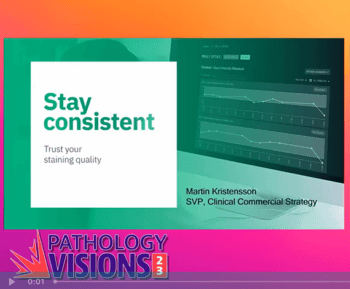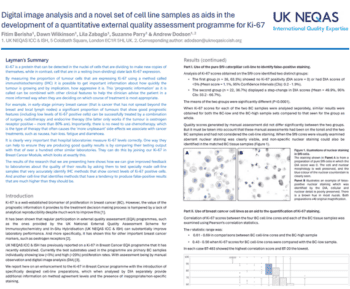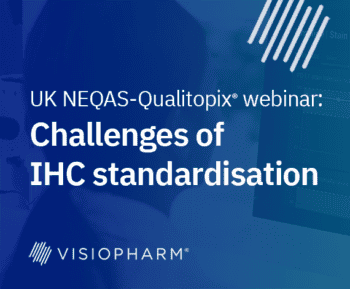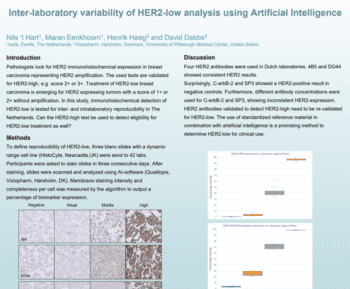Published studies consistently demonstrate discrepancies in immunohistochemistry (IHC) staining from one laboratory to the next. In practice, clinical IHC laboratories usually report consistent results on samples that are negative or strongly positive. However, tumor samples with biomarker expression levels in the middle, between these two extremes, yield variable results among laboratories. If the IHC test is for a targeted therapeutic, then these are the patients at greatest risk to be treated incorrectly. The answer is to adopt the kind of quality assurance that is used in other parts of the clinical laboratory.
In this seminar, we describe the theory and practice of new IHC quality assurance tools. Calibrators provide, for the first time, a direct readout on the analytic sensitivity of IHC assays. Achieving a target lower limit of detection (LOD) guarantees an appropriate stain intensity. Controls, on the other hand, are well-established in IHC. However, labs are usually not aware if their controls have relevant biomarker concentrations, including whether the biomarker concentration is even in the assay dynamic range. This presentation includes a description of both the science and clinical use of IHC calibrators and linear-range controls, including their objective quantification and use for statistical process control. These more advanced quality assurance tools are required to ensure accuracy and consistency in patient testing.

Steve Bogen, CEO, Boston Cell Standards, USA
Dr Bogen is a Board-Certified Clinical Pathologist, having graduated from the University of Chicago Pritzker School of Medicine (M.D.) and the Weizman Institute of Science (Ph.D.), with a post-graduate residency and research fellowship at the Brigham and Women’s Hospital. He is Adjunct Professor of Pathology and Laboratory Medicine at Tufts University School of Medicine and served as Medical Director, Clinical Chemistry Laboratory at Tufts Medical Center until 2021. He is also an NCI-funded investigator whose research has focused principally on developing better diagnostic tools. Dr. Bogen was previously the founder of CytoLogix Corporation. He now serves as CEO of Boston Cell Standards.








